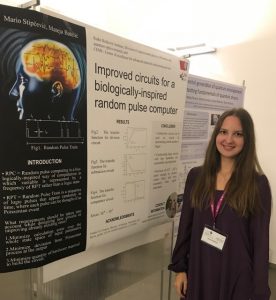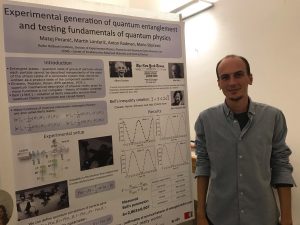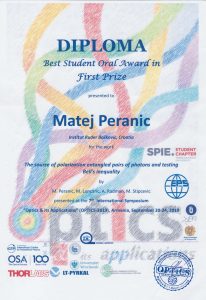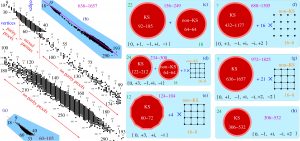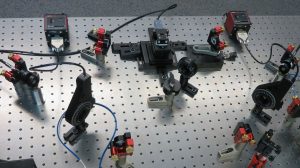5. 8. 2021. Uspostavljena je šifrirana audio-video komunikacija između Italije, Slovenije i Hrvatske uz pomoć kvantne tehnologije.
Prva javna demonstracija kvantne komunikacije između tri zemlje: Italije, Slovenije i Hrvatske, održana je danas u sklopu sastanka G20 u Trstu. Taj je prijenos ostvaren između Trsta, Ljubljane i Rijeke. Zahvaljujući znanstvenicima i stručnjacima predvođenima Institutom Ruđer Bošković (IRB) u sklopu konzorcija Hrvatske kvantne komunikacijske infrastrukture (CroQCI), Hrvatska se sudjelovanjem u ovom poduhvatu, iako nije članica G20, našla uz rame najbogatijih i najutjecajnijih zemalja.
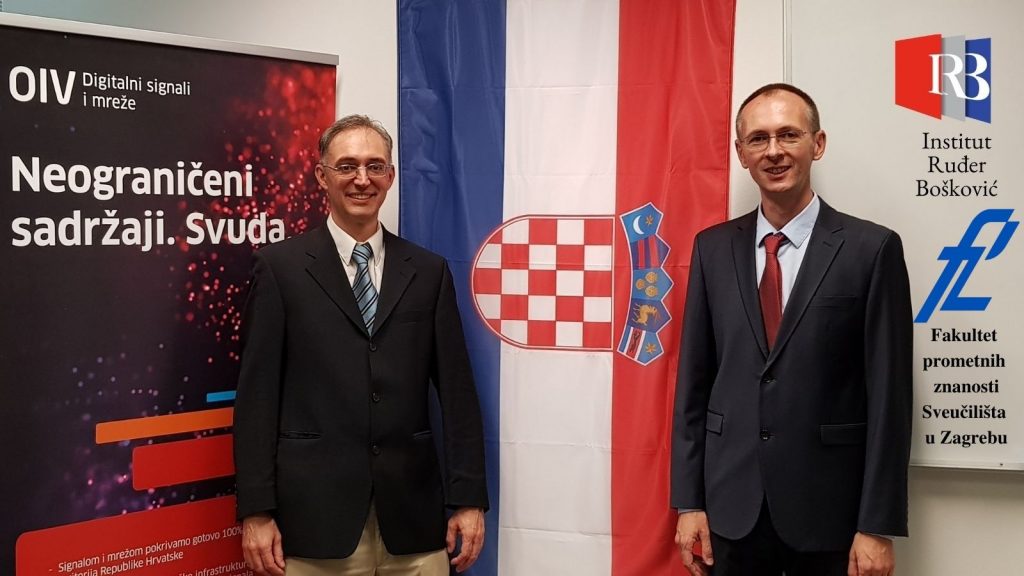
dr. sc. Mario Stipčević i dr. sc. Martin Lončarić
Demonstraciju su organizirali prof. Angelo Bassi s Odjela za fiziku Sveučilišta u Trstu i grupa za kvantne komunikacije Nacionalnog instituta za optiku (CNR-INO) pod vodstvom dr. sc. Alessandra Zavatte.
U Sloveniji su demonstraciju predvodili prof. Rainer Kaltenbaek i prof. Anton Ramšak s Fakulteta za matematiku i fiziku Sveučilišta u Ljubljani, uz tehničku podršku Telekoma Slovenije, dok su u Hrvatskoj ovaj poduhvat predvodili dr. sc. Mario Stipčević i dr. sc. Martin Lončarić s Instituta Ruđer Bošković uz podršku kolega s Fakulteta prometnih znanosti u Zagrebu te tvrtke OIV – Digitalni signali i mreže.
“Hrvatska strana, pored pune kvantne komunikacije na 100,5 kilometara dugoj relaciji Trst-Rijeka, ovdje je po prvi puta u svijetu javno demonstrirala takozvanu “kvantno pojačanu kriptografiju”, putem koje je Rijeka povezana sa Zagrebom. Uređaj koji je to omogućio plod je suradnje Pomorskog centra za elektroniku (PCE) iz Splita i Instituta Ruđer Bošković iz Zagreba. To je međukorak koji nudi sigurnost manju od kvantno kriptografske (koja je apsolutna), ali i značajno veću od uobičajenih kripto rješenja, a po bitno nižoj cijeni od kvantne kriptografije”, objasnio je dr. sc. Mario Stipčević, voditelj Laboratorija za fotoniku i kvantnu optiku na IRB-u te jedan od koordinatora demonstracije u Hrvatskoj.
”Uspješnom realizacijom ovog poduhvata naši su znanstvenici i stručnjaci probili led i utrli put realizaciji kvantne infrastrukture u Republici Hrvatskoj. Ovime je dokazana spremnost Hrvatske za sudjelovanje u izgradnji sveeuropske kvantne komunikacijske mreže,” izjavio je dr. Stipčević.
Kvantna komunikacija zadovoljava potrebu za sigurnom komunikacijom, što je prioritet svih vlada diljem svijeta. Ova tehnologija postiže apsolutnu sigurnost zahvaljujući kvantnoj enkripciji koja funkcionira putem razmjene fotona, a koja omogućuje trenutnu detekciju pokušaja hakerskog upada.
“Važnost današnje demonstracije dodatno je naglašena i u kontekstu buduće Europske kvantne komunikacijske infrastrukture (EuroQCI) koju promiče svih 27 država članica i Europska komisija uz potporu Europske svemirske agencije. Hrvatska je od početaka uključena u oblikovanje EuroQCI”, objašnjava dr. sc. Martin Lončarić s IRB-a, koji je uz dr. sc. Stipčevića koordinator ovih aktivnosti u Hrvatskoj.
“Danas smo položili kamen temeljac nove europske kvantne infrastrukture”, objasnio je predsjednik europske Quantum Community Network (QCN) Tommaso Calarco. “Kruna istraživanja provedenog tijekom prve faze programa ‘Quantum Flagship’ nudi svim europskim građanima infrastrukturu za potpunu zaštitu privatnosti njihovih podataka uz sigurnost bez presedana, koja nam po prirodi i pripada”, zaključio je.
Demonstracija je započela službenim pozdravima predstavnika institucija, nakon čega je je uslijedila prava glazbena poslastica koju su priredila tri glazbena kvarteta. Naime, glazbenici su koristeći kvantnu kriptografiju uspostavljenu za demonstraciju ove komunikacije izveli posebno pripremljena glazbena djela u svakoj od triju država.
Glazbeni nastup ostvaren je zahvaljujući suradnji tršćanskog Konzervatorija “Giuseppe Tartini” zajedno s Muzičkim akademijama u Ljubljani i Zagrebu.
Kvartet saksofonista Muzičke akademije u Ljubljani (Miha Rogina sopran, saksofon, Nika Deželak alt saksofon, Agata Živoder tenor saksofon, Domen Koren bariton) izveo je “Tango virtuoso” Thierryja Escaicha. Gudački kvartet Muzičke akademije u Zagrebu (Matej Žerovnik i Luka Kojundžić violina, Filip Kojundžić viola, Lucija Mušac violončelo) izveli su “Scherzo” Frana Lhotke, dok je kvartet saksofonista Tršćanskog konzervatorija “Giuseppe Tartini” (sopran-saksofon Elia Sorchiotti, alt-saksofon Emma Marcolin, tenor saksofon Matilda Travain, baritonski saksofon Marin Komadina), izveo “Suite Hellenique” Pedra Iturraldea.

Potporu realizaciji dali su Ministarstvo vanjskih i europskih poslova, Ministarstvo znanosti i obrazovanja, Ministarstvo mora, prometa i infrastrukture, Ministarstvo obrane i Agencija Alan te projekti Hrvatske zaklade za znanost ug. br. IPS-2020-01-2616 i MZO ug. br. KK.01.1.1.01.0001.
Dodatne informacije možete pronaći ovdje.
Video URL: https://youtu.be/LLc_YP7FngI






